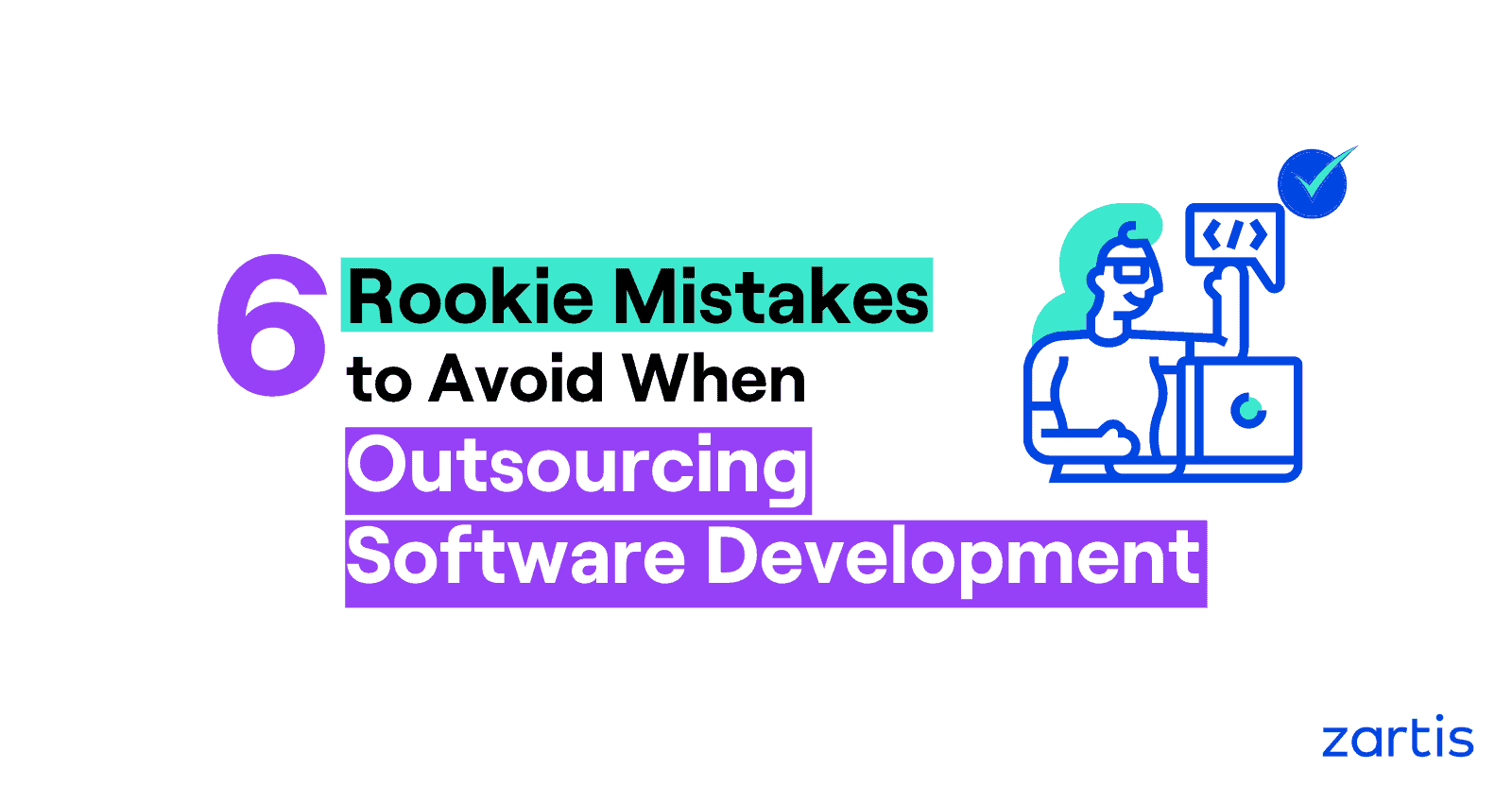The demand for IT outsourcing services has never been greater. Estimates of the software development outsourcing market size in 2019 range from USD 333.7 billion to a whopping USD 520.74 billion. What’s more, industry experts predict a compound annual growth rate of 4.5–7.7% in the next four to six years, COVID-19 notwithstanding.
That means the market could well hit USD 410.2 billion by the end of 2027. But the more important question is: what does that mean for you — and your business?
Source: ResearchAndMarkets.com
The main takeaway is this: software development outsourcing is the future. You may ignore the trend, but you will be doing so at your peril — and failing to capitalize on a massive competitive advantage.
That said, you can only reap the benefits of outsourcing if you do it right. Otherwise, you might never get a decent return on your investment. To avoid that, you want to stay away from some all-too-common outsourcing mistakes that businesses make when hiring services.
We’ll get into these in a bit — but first things first.
What Is Software Development Outsourcing?
Outsourcing or remote software development is a practice whereby an organization contracts an external service provider to carry out some or all of its software development projects. The remote developers may work independently or together with an in-house engineering team.
Why Use IT Outsourcing Services?
The main benefits of software development outsourcing are:
- Lower operating costs
- Greater flexibility
- Increased efficiency
- Access to a much larger talent pool
How to Choose a Good Software Outsourcing Partner
The larger the outsourcing industry gets, the more challenging it is to pick out a high-quality service provider. Here are four rules of thumb to bear in mind to avoid common outsourcing mistakes when choosing an outsourcing provider:
1. Find Out Which Outsourcing Model Fits Your Company Best
There are three main software development outsourcing models: onshoring, nearshoring, and offshoring. Out of these, which is the best example of outsourcing?
As the name suggests, onshoring is a type of domestic outsourcing where an organization transfers its software development to a more affordable location in the same country.
In contrast, nearshore software development, also known as the extended team model, takes software development abroad to a nearby country. And with offshore outsourcing, companies export their development projects to a whole different continent.
The answer to the question of ‘What is the best software outsourcing model?’ largely depends on your priorities and business goals. Is your primary focus on maximizing cost savings, boosting productivity, or attracting the best external expertise money can buy? Give that serious thought — and make sure to check out our article on the different outsourcing models.
2. Shortlist Potential Service Providers
It will go a long way in dodging software development outsourcing pitfalls. if you look for companies that have:
- Relevant experience in the field
- Verifiable case studies
- Certifications and industry awards
- High security standards
- Good client and employee ratings on platforms such as Glassdoor
3. Qualify Shortlisted Candidates
When interviewing shortlisted suppliers, be sure to inquire about their:
- Business models
- Developer expertise
- Budgeting
- Hiring processes
- Project timeframes
However, all that barely scratches the surface. To find out what many other questions you should be asking, read our in-depth article on choosing a good software development company.
4. Ensure a Smooth Continued Collaboration
When making your final selection, look out for a good cultural fit as well as technical expertise. Afterward, be sure to invest in proper onboarding and keep your extended development teams happy.
6 Common Software Development Outsourcing Pitfalls
1. Choosing the Wrong Outsourcing Model
What do most companies that report less-than-satisfactory results with their outsourcing experience have in common? A mismatch between their business objectives and the software development outsourcing model they bet on.
Onshoring works best for businesses that are looking for a near-perfect cultural fit with no language barriers and want to keep their entire operation under the same regulatory framework. The tradeoff is only a relatively modest reduction in costs — if at all — and a limited talent pool.
Offshoring is more cost effective: the developer rates in traditional offshoring locations such as India or China are hard to beat. However, they often go together with considerable cultural barriers, time differences, and travel expenses.
Nearshoring has the best of both worlds: geographical and cultural proximity, on the one hand, and a diverse offering of highly skilled (and reasonably priced) developers, on the other. That makes this model ideal for both long- and short-term outsourcing. This software development outsourcing model is also uniquely well-suited for staff augmentation and other projects that require close collaboration and direct communication between the in-house and remote software development teams.
2. Working with the Wrong Partner
How do you make sure that your IT outsourcing services vendor is a good fit? Here are some pointers:
- Ask the right questions (see which ones here).
- Carefully assess their technical expertise.
- Have a strict due diligence process.
- Request (and verify) references and case studies.
- Don’t overlook the importance of the cultural fit. Transparency, trust, and open communication are crucial, especially when things — inevitably — go wrong.
- Prioritize security considerations. Does the provider have ISO/fallback plans? Data protection systems?
- Finally, don’t forget that going cheap can sometimes be more expensive. The goal is to look for a balance between high-quality developers, a good cultural fit, and a budget-friendly service. Hiring a mix of senior and junior professionals is a great way to get the skills you need while still meeting your bottom line.
3. Not Drawing Up a List of Discrepancies/Differences
Your company and your software development outsourcing services provider are two separate entities. There will be discrepancies in the way you operate. If you don’t know what these are in advance, you will face challenges in the first days, weeks, and even months of your work together.
To avoid that, identify and address your differences well ahead of time. Areas of potential friction include:
- Hardware needs
- Communication software
- Working hours
- Public holidays
- Approach to project management
4. Poor Onboarding
One of the biggest outsourcing mistakes is assuming your extended development team will hit the ground running without any need for onboarding. Some of the hallmarks of subpar onboarding include:
- No clear definition of the role. Ensure your new team members know exactly what is expected of them and who they can ask for help or information.
- No clear workspace definition. Do your remote developers have to create accounts or employee profiles? Is there any software they need to install? Should they join certain groups? Is there hardware that needs setting up? Make a checklist of everything your new team members would need to hit the ground running — and be sure to review and update the list over time.
- No product overview. All team members — old and new — must have the same understanding of the product they are going to be working on.
- No in-depth introduction of the business. Explain to your new developers what the company does and what its various departments are. Introduce them to your other staff members and clarify their responsibilities. Go over your main clients and cost structure.
- Not setting aside enough time for onboarding. Proper onboarding takes time. Don’t rush it, and don’t overwhelm your new team members with too much information or too many expectations right off the bat.
5. Failing to Address Knowledge Gaps Early On
You will get the most out of outsourcing if you take the time to understand the knowledge gaps in both your in-house and extended team as soon as possible. Then, enable them to learn from each other and exchange knowledge, technology solutions, tools, and resources. It’s also a good idea to organize training sessions or request your outsourcing provider to do that for your extended team.
6. Not Pursuing Long-Term Collaboration
The longer you work with your outsourced team, the deeper they will get to know your product, company, and team culture. This is an invaluable resource, and you want to use their expertise to the fullest — and maybe even go beyond the scope of the original, short-term project. For instance, you might want to consider getting your extended developers to help onboard and mentor junior engineers or brainstorm innovations and fresh solutions.
Getting IT Outsourcing Services Right: Final Thoughts
As you can probably tell by now, outsourcing is not rocket science. As long as you stay clear of the most common outsourcing mistakes people make, you will minimize the risks and maximize your chances of success.
To learn more about remote software development, take a look at these related posts:
- Nearshore vs. Offshore Software Outsourcing: Which One Is the Better Option?
- Building an Extended Development Team vs. Hiring In-House Developers: Pros and Cons







